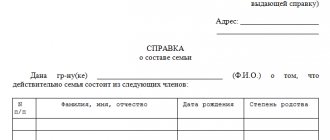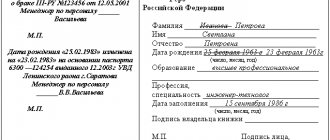Consanguineous marriage is a union between people who have a common ancestor. Science and religion oppose such relationships. This is explained by the high probability of future births in such families of children suffering from various diseases.
If we recall history, we can find out that quite a lot of facts are known about the formalization of official relations between persons who are relatives to each other. In particular, this was accepted in royal families.
Such unions were not always concluded out of great love. Often the main reason for formalizing such relations was geopolitical or financial issues. So are consanguineous marriages allowed in Russia or not?
What are assortative and consanguineous marriages?
Assortative marriage is a selective close relationship between representatives of different sexes .
At the moment, the most common form of registration of relationships. Assortativity is a preference in choosing a phenotypically similar partner to create a family (positive assortativity). It may also consist in concluding formal relations between phenotypically different people (negative assortativity).
This can lead to deviation from panmixia, that is, randomness regarding phenotypic characteristics and equally likely to enter into close relationships. A clear indicator of negative assortative close relationships is considered to be an alliance between two red-haired people.
In this case, the probability of creating a pair between similar individuals according to many characteristics is considered much lower than expected. If the likelihood of families being formed between similar people is higher than expected, then we are talking about positive assortative marriages.
It should be noted that these relationships between people with a similar phenotype in terms of genetic effect are similar to those in which close relatives are. Similar phenotypes are the main factor that influences the frequency of formation of many mental pathologies and conditions.
These include schizophrenia, neuroses, alcohol abuse, mental retardation. The risk of developing such conditions is higher in patients with nosological forms.
Thus, subpopulations appear with high genotypic correlation within them and the risk of these diseases appearing in future children. For example, people suffering from mental retardation who marry people with similar health problems often give birth to children with the same defects.
Consequently, such parents give birth to more babies than individuals without any deviations. Assortative unions lead to a serious change in the frequency of certain genes in a population, which often provokes a deterioration or improvement in the viability of this population, depending on the direction of preferences.
Consanguineous marriage is a union formed between representatives of different sexes who have a common relative. Since ancient times, society has had a negative attitude towards such relationships between the sexes. Moreover, some countries oppose such marriages and they are punishable by law.
Unfortunately, in our society, incest between father and daughter, sisters and brothers is very common. Close relationships between uncles and nieces, cousins and second cousins are also not uncommon.
There are certain restrictions on this matter, both from religion and by law. Such relationships are categorically not recognized in the countries of Europe, North America and other countries that support Christian traditions. In some Muslim countries, on the contrary, such unions are desirable.
What is the true danger of consanguineous marriages? Typically, many recessive diseases are found in families where both parents are thought to be carriers of the same unwanted harmful gene. Many known recessive diseases are extremely rare.
But a completely random coincidence of carriage of one pathological defect on both sides is a very rare event. If a man and a woman who are related are married, then the likelihood of this coincidence increases sharply. This is all explained quite simply.
Consanguineous couples may have a child with various recessive diseases. In the worst case scenario, every pregnancy will end in miscarriage.
Essentially, blood relatives are people who share one, two, or more common ancestors. For example, a man and a woman have the same grandparents. As is known, a person is a carrier of at least one harmful recessive gene. That is why it could be passed on to both grandchildren. Therefore, they will be its carriers.
The meaning of close and distant degrees of biological relationship
Depending on the number of births separating individuals from a common ancestor, the degree of kinship in family relationships is revealed. Moreover, this concept applies only to blood unions.
There are several degrees:
- this includes only fathers and mothers and the children born to them, regardless of their number and gender;
- it is established between grandchildren and grandparents;
- the third degree is characterized by great-grandparents (great-grandparents), as well as their great-grandchildren. This also includes nephews and nieces, as well as aunts and uncles;
- Cousins are included here.
Dear readers! To solve your problem right now, get a free consultation
— contact the on-duty lawyer in the online chat on the right or call:
+7
— Moscow and region.
+7
— St. Petersburg and region.
8
- Other regions of the Russian Federation
You will not need to waste your time and nerves
- an experienced lawyer will take care of solving all your problems!
Is it possible to marry between relatives in Russia?
From a religious point of view, incest is prohibited, in particular by the Bible. History mentions tribes in which people entered into closely related relationships. This was due to the desire to preserve the purity of their own family.
To achieve this, it was customary to marry close relatives. Consequently, the tribe later died out, as the couples were unable to produce healthy offspring.
In many states, such unions between close relatives to varying degrees of kinship are not only not supported, but are also prohibited by law and are equated to committing a serious crime. This is due not only to physiological, but also to ethical considerations.
On the territory of the Russian Federation Art. 14 of the IC does not allow the formalization of official relations between people who are related in a direct line. In other words, the law prohibits the formalization of official relations between parents and children, as well as grandparents and grandchildren.
This information suggests that siblings, adoptive parents and adopted children cannot marry. Despite all this, no official confirmation or refutation of the presence of closely related ties is needed in the registry office.
In our country it is also prohibited to register marriages between uncles and nieces, aunts and nephews, cousins:
. Step-relatives are a type of family ties that arise when two parents enter into a second union between children from previous marriages. Half-brothers and sisters do not have a common father and mother. They are connected exclusively by family relationships, but by no means biological kinship. Accordingly, people who are not related by blood, but are half-brothers and half-sisters, have the right to enter into legal marriage. This is permissible from a legal point of view;
between stepbrother and sister- between cousins/second cousins . On the territory of Russia it is illegal to enter into intimate relationships with first and second cousins;
- between uncle and niece. In Russia, it is prohibited by current legislation to register marriages between uncles and nieces, aunts and nephews.
The attitude of modern society and the law towards consanguineous marriages
The opinion that the closer the parents are in blood relationship, the mentally and physically weaker their offspring, has existed for more than a decade. This fact is explained by the fact that the probability of encountering the same pathological genes is too high.
In fact, marriages between relatives can be registered. When submitting an application to the registry office, the law does not establish the obligation of newlyweds to confirm or deny existing kinship. If they are silent about the presence of family ties, the marriage will be registered, but subsequently it may be declared invalid.
07 Jun 2021 etolaw 874
Share this post
- Related Posts
- Time and timing of repairs in Belarus in a residential building
- Chernobil victims left voluntarily Category III What is required
- Which group of disabled people are not subject to administrative liability?
- Housing program for large families in need of housing in Bashkiria
Does the church prohibit unions in which the bride and groom are relatives?
The conditions for concluding marriages, which are established by current legislation and church regulations, have significant differences. Therefore, not every marriage that was registered in the registry office can be permitted by the church.
Church marriage between relatives up to the fourth degree of kinship is strictly prohibited . In other words, between brother and sister.
In addition to kinship relations, a serious prohibition on formalizing a union is the rapprochement of two clans through the union of their representatives. This is similar to blood relationship. Religion implies that upon marriage, a man and a woman become blood relatives.
They are one flesh. The so-called property relations imply that relatives also include father-in-law, son-in-law, mother-in-law, daughter-in-law, stepfather, stepdaughter, brother-in-law.
It is worth noting that religion also opposes the conclusion of a church union between godparents and godchildren. It is also prohibited for two adoptive children of the same child to formalize their relationship.
As a rule, there are no strict canonical obstacles to marriage, but at the moment permission for such a relationship is very difficult to obtain. To do this, you need to submit a petition to the ruling bishop.
Second cousins - marriages
Church-canonical obstacles to Marriage
The priest, before performing the wedding, should find out whether there are any church-canonical obstacles to concluding a church marriage between these persons. First of all, it should be noted that the Orthodox Church, although it considers civil marriage devoid of grace, actually recognizes it and does not at all consider it illegal fornication. However, the conditions for marriage established by civil law and church canons have significant differences, therefore not every civil marriage registered in the registry office can be consecrated in the sacrament of Marriage. Thus, the fourth and fifth marriages allowed by civil law are not blessed by the Church. The Church does not allow marriage more than three times; it is prohibited for persons in close kinship to marry. The Church does not bless a marriage if one of the spouses (or both) declare themselves convinced atheists who came to church only at the insistence of one of the spouses or parents, if at least one of the spouses is not baptized and is not ready to be baptized before the wedding. All these circumstances are clarified when preparing documents for a wedding behind a church box, and, in the cases listed above, the church wedding is refused. First of all, a marriage cannot be performed if one of the parties is actually married to another person. A civil marriage must be dissolved in the prescribed manner, and if the previous marriage was a church marriage, then the bishop’s permission to dissolve it and a blessing to enter into a new marriage is necessary. An obstacle to marriage is also the blood relationship of the bride and groom, as well as spiritual kinship acquired through succession at baptism. There are two types of kinship: consanguinity and “property”, i.e. kinship between relatives of two spouses. Consanguinity exists between persons who have a common ancestor: between parents and children, grandfather and granddaughter, between first and second cousins, uncles and nieces (first and second cousins), etc. The property exists between persons who do not have a sufficiently close common ancestor, but related through marriage. It is necessary to distinguish between the two-parent property, or two-blood, established through one marriage, and the three-parent, or three-blood property, which is established through the presence of two marriage unions. In a two-relative property there are relatives of the husband and relatives of the wife. In a tripartite property there are the relatives of the wife of one brother and the relatives of the wife of another brother, or the relatives of the first and second wives of one man. In a two-parent property, when finding its degree, two cases must be taken into account: a) the property between one of the spouses and the blood relatives of the other, b) the property between the blood relatives of both spouses. In the first case, the relatives of one spouse are in relation to the other to the same extent as they would be if they were his own blood relatives, since the husband and wife constitute one flesh in marriage, namely: the father-in-law and mother-in-law are to son-in-law in the first degree, like his own parents, only, of course, in a two-parent property; brothers and sisters of the wife (Shaurya and sisters-in-law) - in the second degree, like siblings, and also, of course, in a two-parent property, etc. The methods for calculating the degrees of property in this case are the same as in homogeneous kinship. In the second case, when the degree of property between the blood relatives of both spouses is sought, it is necessary to determine: a) to what extent the husband’s relative is related to him and b) to what extent the wife’s relative, in respect of whom the degree is determined, is distant from her; then the number of degrees of both sides is added up, and the resulting sum will show to what degree the husband's relative and the wife's relative are separated from each other. For example, there is one degree between a given person and his father-in-law; between a given person and his sister-in-law - two degrees, between a husband's brother and a wife's sister - four degrees, etc. In a trigender property, resulting from the union through marriage of three clans or surnames, the degrees of the inherent relations are considered in the same way as in property of two relatives, that is, they again add up to the total sum of the number of degrees in which these persons are separated from the main persons through which they are connected to each other in kinship, and this total sum determines the degree of their mutual kinship relationship. In the case of consanguinity, church marriage is unconditionally prohibited up to the fourth degree of kinship inclusive; in the case of a two-parent relationship, up to the third degree; in a three-degree relationship, marriage is not permitted if the parties are in the first degree of such relationship. Spiritual kinship exists between a godfather and his godson and between a godmother and her goddaughter, as well as between the parents of the person adopted from the font and the recipient of the same sex as the person adopted (nepotism). Since, according to the canons, baptism requires one recipient of the same sex as the person being baptized, the second recipient is a tribute to tradition and, therefore, there are no canonical obstacles to concluding a Church Marriage between the recipients of the same baby. Strictly speaking, for the same reason, there is also no spiritual relationship between a godfather and his goddaughter and between a godmother and her godson. However, pious custom prohibits such marriages, therefore, in order to avoid temptation in this case, you should seek special instructions from the ruling bishop. The bishop's permission is also required for the wedding of an Orthodox person with a person of another Christian faith (Catholic, Baptist). Of course, a marriage cannot be celebrated if at least one of the parties professes a non-Christian religion (Muslim, Judaism, Buddhism). However, a marriage concluded according to a heterodox rite, and even a non-Christian one, concluded before the spouses joined the Orthodox Church, can be considered valid at the request of the spouses, even if only one of the spouses has received Baptism. When both spouses, whose marriage was concluded according to a non-Christian rite, convert to Christianity, the sacrament of Marriage is not necessary, since the grace of Baptism sanctifies their marriage. You cannot marry someone who has once bound himself to a monastic vow of virginity, as well as priests and deacons after their ordination. As for the age of majority of the bride and groom, their mental and physical health, voluntary and free consent, since a civil marriage cannot be pre-registered without fulfilling these conditions, the Church, if there is a Marriage Certificate, is exempt from clarifying these circumstances. Source:
We recommend reading: Certificate for a Large Family Sample
Well, this thesis is not serious. . “From what I heard. " , ". I can’t provide any documents. “This is not a conversation. First, find such documents, and then we will return to this issue. For example, I have never seen such documents about peasants. Give examples, show me, then maybe I’ll slow down, but for now I don’t see the need for it.
Why is it dangerous to marry blood relatives?
For several decades now, there has been an opinion that marriages between relatives provoke a high probability of encountering the same problem genes.
In this case, we are talking about diseases such as hemophilia, Down syndrome and other diseases.
If, with normal intimacy between two people who are not related to each other, there is a risk of having a child with congenital pathologies and mental retardation, then with consanguinity the risk increases approximately five times.
In addition, according to research by many geneticists, in consanguineous marriages the likelihood of stillbirth increases by a quarter. The risk of premature death at an early age increases by 34%. And the likelihood of deformities and other defects in fetal development increases by 50%.
Geneticists have proven a certain pattern in the frequency of pathologies, congenital diseases, mental and other abnormalities in babies born as a result of incest.
In the study of various hereditary diseases, great importance is given to consanguineous marriages. It has been proven that incest can lead to genetic mutations in the fetus, as well as degeneration of the offspring.
Geneticists' opinions on consanguineous marriages
When formalizing relations between relatives, there is a possibility of a stillbirth, a miscarriage, the appearance of chronic illnesses in children in the future, as well as delayed mental development and speech disorders.
Even a born baby may have body features: too tall or short, high or low weight. Based on these signs, one can suspect the presence of a genetic disease.
A so-called “spoiled” gene may be present in the genetic apparatus of a husband or wife. It can be dominant or recessive. Such a gene will suppress a healthy one.
A damaged section of a DNA molecule can be recessive for many generations and later become dominant. This is precisely the reason why a child gets some kind of hereditary disease.
From a genetic point of view, marrying first cousins is not as dangerous as people think
It turns out that children whose parents are related have only a 2% higher risk of birth defects or death—that's the same as if the mother was over 40 years old. “It seems to me that from the point of view of science, the ban on consanguineous marriages is unfair,” says one of the researchers of the issue. “No one would think of banning a marriage between people if one of them is affected by Huntington’s disease, despite the fact that the risk of passing it on to a child is 50 %".
There are many things that can lead to birth defects in a child (such as the age of the mother and her habits), but when it comes to the risk of reproduction of cousins, everyone immediately thinks of the terrible incurable abnormalities, problems and genetic diseases that are sure to strike the offspring of such a pair. However, scientific evidence on incestuous unions shows an interesting picture.
We recommend reading: Standard Standards for Schools Harmful Working Conditions Technology Teacher









